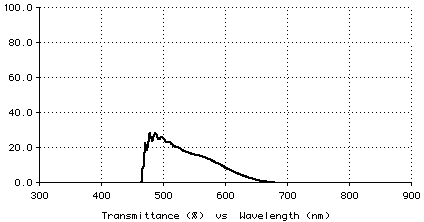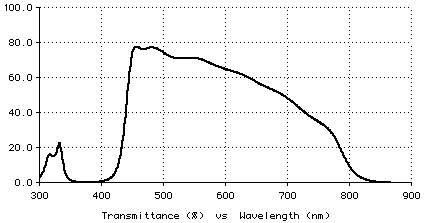Transparent Metal Coatings
-
Michael Scalora, Mark J. Bloemer, and Charles M. Bowden, "Metals under a new light",
Optics & Photonics News, pp. 23-27 (September 1999).
the authors discuss the design and manufacture of transparent coatings that contain a substantial thickness of metal. Quoting from their article, "Some applications for transparent, conducting films include antennas embedded in windshields, electrodes on flat panel displays, electromagnetic shielding, and solar window panes". The general structure of their coatings is (D M D)^n, which is a periodic structure consisting of dielectric layers D and metal layers M. The substrate is glass (index = 1.52). The authors discuss various designs based on M being silver (Ag) because they seek a low resistance. Below is a plot of the theoretical performance of a 41-layer coating D = 36nm of TiO2, M = 25nm of Ag, and n = 20.

Another design the authors consider is the 13-layer design with D = 36nm of TiO2, M = 16nm of Ag, and n = 6. This coating, containing a total of 96nm of silver, has a higher and broader transmittance, as shown below.

There are a number of benefits of this type of coating: high conductivity, a single passband (if the metal layers are thick enough), and transmission that is not sensitive to the incident angle. Although this type of coating design is not novel (work on metal-dielectric coatings was done as early as the 1950s), there seem to be many new applications.